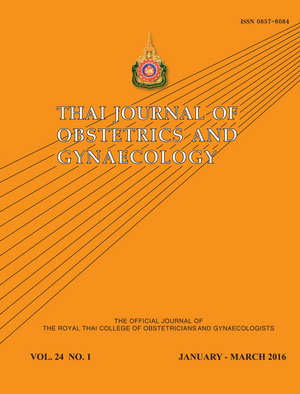Comparison of Sublingual and Vaginal Misoprostol for Cervical Ripening before Curettage: A randomized controlled trial
Main Article Content
Abstract
Objective: To compare the effectiveness and side effects of misoprostol as a cervical ripening agent through two different routes of administration before curettage.
Materials and Methods: The study employed a hospital based prospective randomized controlled trial. A total of 70 patients were simple random divided in two groups for 400 micrograms sublingual and vaginal administration. The drug was administered 6 hours before dilatation and curettage or fractional curettage. Efficacy was assessed on cervical dilatation achieved, pain score and vaginal blood loss. The tolerable limit was noted based on side effects.
Results: The sublingual group had significantly more cervical dilatation than the vaginal group (median cervical dilatation 7 mm vs. 5 mm, P < 0.001). Significantly less pain scores (VAS) in sublingual group than vaginal group (3.3 vs. 4.8, P < 0.001). Postoperative vaginal blood loss in the sublingual group was significantly greater than the vaginal group (20 ml vs. 10 ml, P < 0.001). Other side effects such as fever, chill, nausea, vomiting and diarrhea did not differ in both groups.
Conclusion: Sublingual misoprostol could be more effective for cervical dilatation, but presents greater postoperative vaginal blood loss than vaginal route.

